As a young adult, Francesca P. bounced back and forth between two contradictory modes of existence. She worked in IT, and happily spent hours staring at the screen and reworking pieces of code. But she was also sporty. In her free time, she loved running, windsurfing, riding her bike, and rock climbing.
She suffered a young person’s usual aches and pains, but preferred not to dwell on them. After all, she had places to be that were not doctors’ offices. She would ignore her minor hurts, and they would go away. Until, one day, they didn’t.
A Pain in the Butt
In her early thirties, Francesca left her IT job in her native Milan and travelled to the Emerald Isle to continue her education. She got her bachelor’s degree in information technology, and liked the subject well enough to pursue a master’s.
She spent her days working at an IT job, and her nights at school. It was easy to get lost in her coding work, and she would spend hours bent in awkward positions. She would sit with one leg folded under her, and her shoulders slouched forward. When she tried to stand up, she noticed the pins and needles in her legs, and cursed her stupidity. But when she sat back down, she would do the same thing.
Then, in 2017, she had an ergonomic assessment done at work. The position the ergonomist put her in – feet on the floor, back straight, wrists straight – felt even more awkward then her usual Gumby poses. But she supposed it was healthier, and did her best to maintain it.
After a few months, she started to notice a strange stiffness in her hip. She ignored it at first, thinking it would go away on its own. But instead, it worsened. The muscle contracted, and stayed stuck in a vicious cramp for two weeks.
When the muscle finally relaxed, Francesca realized that sitting was no longer comfortable. When she tried it, she felt an intense pain somewhere around the curved ridge of her ischium.
She figured there was just some residual tightness, and booked a massage. But if anything, kneading her hip muscles made the problem worse. She tried medications, but these also proved ineffective.
She visited her doctor, who ordered an MRI of her lumbar spine. The scan showed slight changes to her L5-S1 disc, and a leg raise test showed she had some tension in her sciatic nerve. But these test results weren’t outside the norm, and Francesca’s doctor didn’t think her pain was due to sciatica. Perhaps the piriformis muscle was responsible? It was impossible to say.
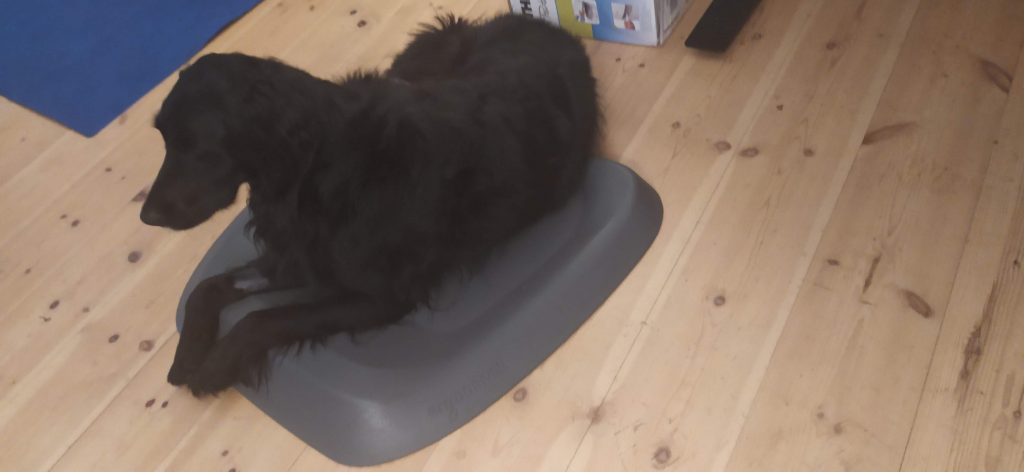
Transcontinental Health Care
Francesca quickly grew frustrated with navigating the byzantine Irish health care system. She could either see a doctor through the public health care system (and risk dying of old age before the appointment date), or pay for private health care. It was not always clear which services were covered under her insurance and which were not, and the wait times for private health care could still be lengthy.
In 2018, Francesca’s German employer summoned her to Berlin, and she was happy to follow orders. She quickly learned to love Berlin for its cosmopolitan character and vibrant culture. “It’s very open,” Francesca explained. “Even the weirdest person wouldn’t feel weird. You can be whatever you want to be. I quite like that.” Her dog, Jago, was a fan of the city’s parks and surrounding forests.
Whether the health care system was better, or not, was debatable, but at least it was easier to navigate. Its structure was similar to the Italian health care system, so Francesca found it more intuitive. She hoped that the doctors in her new country could finally figure out the source of her pain.
But after consulting with physical therapists, immunologists, rheumatologists, nutritionists, and osteopaths, Francesca was no closer to a diagnosis than she had been in Ireland. “At this point, it’s been two and a half years,” she said. “I’m tired of chasing a diagnosis. Every time, you go there with hope, and then you don’t find anything. You find it hard to be believed or understood.”
The language barrier didn’t help. Although Francesca speaks fluent Italian, English, and Spanish, she has yet to master German. And while many of her German doctors speak passable English, they are often uncomfortable having nuanced conversations in a foreign language.
Then again, it’s not clear that Francesca would fare any better if she spoke impeccable German. She’s seen doctors in three countries, including her native Italy. None of them have been able to give her a satisfactory explanation for her pain. Compassion, she’s learned, is a skill unrelated to language fluency.
Injuries Come, but They Don’t Go
While Francesca’s sitting pain was the most debilitating, she amassed a collection of other pains that never went away. One pain often led to another, making it impossible to find a comfortable position.
Take her foot, for example. Several years before Francesca’s sitting pain started, she was moving some furniture, and dropped a heavy piece on her foot. It hurt, of course – Francesca’s foot turned black, and she walked with a limp. But that was okay, she figured. It would heal.
She changed her gait, rotating her injured foot inward so she could place her weight on the arch. She kept running, even though she limped. Then, she developed plantar fasciitis in her good foot, and shoes in general became uncomfortable. Shortly afterwards, she added sitting pain to her list of ailments.
Last year, her feet were doing well enough that Francesca decided to try running again. She hit the pavement, and broke her personal record for the 5k. She also returned to the gym, and started lifting weights. Her reward for all this added activity was hamstring tendonitis.
Then, in January 2020, she went on vacation. She did a lot of walking, and realized she should have packed wider shoes. As a result, she started having pain in the ball of her foot during the toe-off stage of walking. The more she walked, the worse it got. Her doctor ordered x-rays, but her bones were fine. She bought new shoes and insoles, and carried on. After two months, the pain faded, only to reappear in October.
She developed neck pain, which she believed was due to muscle tension, but it seemed to pop up at unexpected times. Recently, she tried an at-home yoga program. It felt pleasant at the time, but afterwards her neck complained vociferously.
It wasn’t easy for Francesca to explain exactly what was wrong. She had a collection of pains, but they didn’t add up to any discernable disorder.
Her sitting problem never faded. She could work while sitting down for ten minutes, but the pressure on her sit bones kept her shifting uncomfortably. She would often sit cross-legged, or on one foot, to take the pressure off the most sensitive parts of her backside.
After a while, the discomfort would transform into distinct and definite pain. The muscles in her lower back and hip would tense up, and they could remain tight and painful for weeks. It was this lingering quality of the pain that made sitting, even for short periods, so difficult.
She experimented with positions besides sitting, but the alternatives caused new pains to crop up. When she lay on her side, her hip complained. When she lay on her back, her neck bothered her.
Her only real option was to keep alternating between positions. She couldn’t avoid pain, but she could prevent any single complaint from becoming unbearable. “I’m like a shark,” Francesca said. “I can’t stop, I must keep moving. I’m always restless.”
That restlessness extends into the night, and Francesca had frequent insomnia. Ironically, she could sleep soundly when she was in pain, or in crisis. But when everything was going well, she would wake up regularly throughout the night.
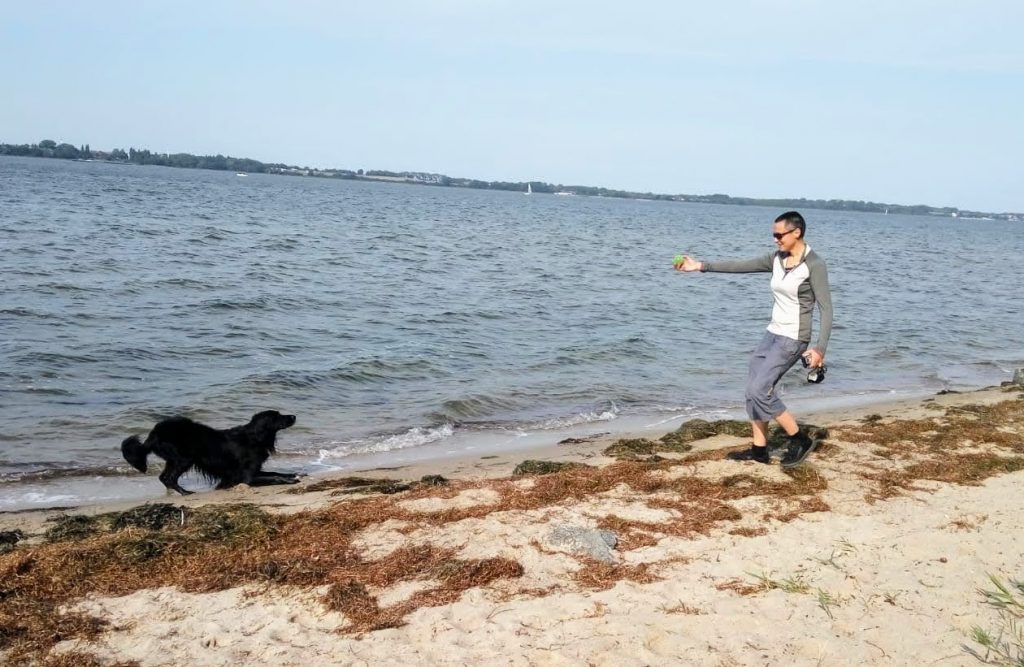
Symptoms, Without a Disease
Unfortunately for Francesca, these vague and changeable symptoms were all too easy for doctors to dismiss, especially in the absence of conclusive test results. Her neck pain could be explained by a small disc herniation in her cervical spine, but it looked minor on the scans, and her doctors saw no benefit in treatment.
Complicating matters is Francesca’s existing diagnosis of anxiety, which is a convenient scapegoat for any pain without a clear medical cause.
Francesca is the first to admit that her mood and physical pain are often correlated, although pain is as likely to spike her anxiety as the other way around. “I tend to be quite anxious once I start getting a new pain,” she explained. “Since one thing became chronic, I’m afraid every new thing I get will become chronic.”
Francesca has been seeing a therapist for years. And while that’s helped her manage her anxiety, it’s done nothing to improve her sitting pain, or her other physical afflictions.
As for the sitting pain, no doctor has been able to offer a compelling guess.
In June, her rheumatologist ordered blood tests. They revealed slightly elevated thyroid autoimmune antibodies, as well as abnormal B-12 and iron levels. She spoke to a nutritionist, and stopped eating gluten and dairy. Her next test results came back normal.
She visited an immunologist to follow up on the thyroid antibodies, and an ultrasound showed all was well. The immunologist discharged her with a diagnosis of anxiety, even though he had never mentioned it during her visit. He didn’t bother to explain why anxiety would cause sitting pain, autoimmune antibodies, or any of Francesca’s other symptoms.
“It’s just another frustrating experience with the medical sector,” Francesca said. “I’m trying to be very good and not blame them. But they should do the same, and not just tell me I’m anxious.”
The lack of a diagnosis is frustrating, not only because it doesn’t allow for targeted treatment, but also because it denies social validation. “Just going to a friend or coworker, I could say, ‘I can do this, or not do this.’ It would be easier.” Francesca said. “Now, it’s a really difficult and weird situation. Not many people can understand. Before living it myself, I probably couldn’t understand it either.”
The lack of diagnosis also encourages her anxiety to run amok. When doctors can’t offer an explanation for her latest pangs, Francesca tries to diagnose herself. And her anxiety is quick to fixate on the direst possible cause.
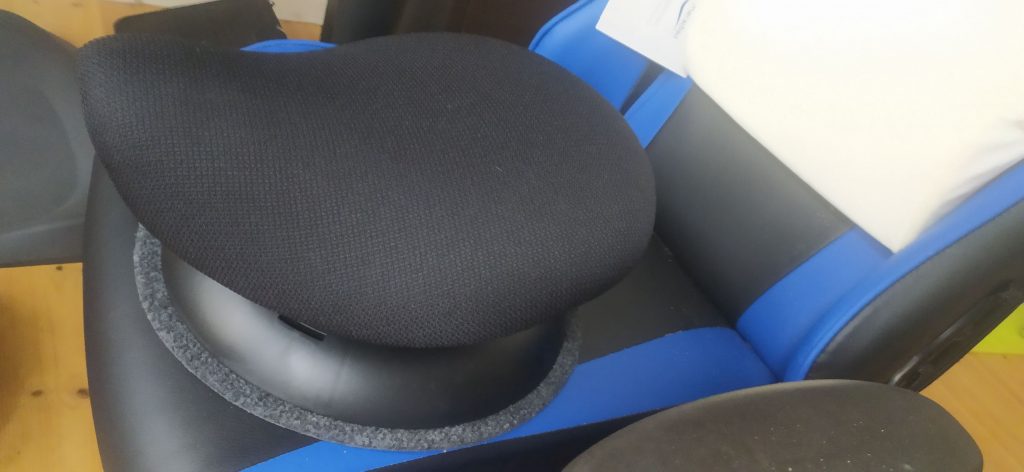
Working Through the Pain
Last August, the employer that brought Francesca to Germany shuttered its offices, and laid off most of its employees, including Francesca.
This spring, she was lucky enough to find a new product support role that’s fully remote, even in the absence of COVID restrictions. Although the company has its headquarters in Berlin, Francesca’s supervisor and many of her team members are based in the US, so there’s little incentive for her to go to the office.
Working with an American team involves regular evening meetings, which Francesca doesn’t mind, since it gives her the flexibility to step away from work to take walks, or meditate during the day.
Working in product support is also easier on her body than being a programmer, since it’s not as easy to get sucked into her work for hours at a time.
Though Francesca was lucky enough to land a good job that’s compatible with her condition, she is still aware of how precarious her employment situation is. She’ll go through phases where the pain will intensify for no reason, which makes it hard to concentrate on work. One prolonged spiral could push her out of the workforce completely.
But when she’s tempted to either panic or wallow in despair, Francesca instead takes a deep breath, and finds a new therapy to try.
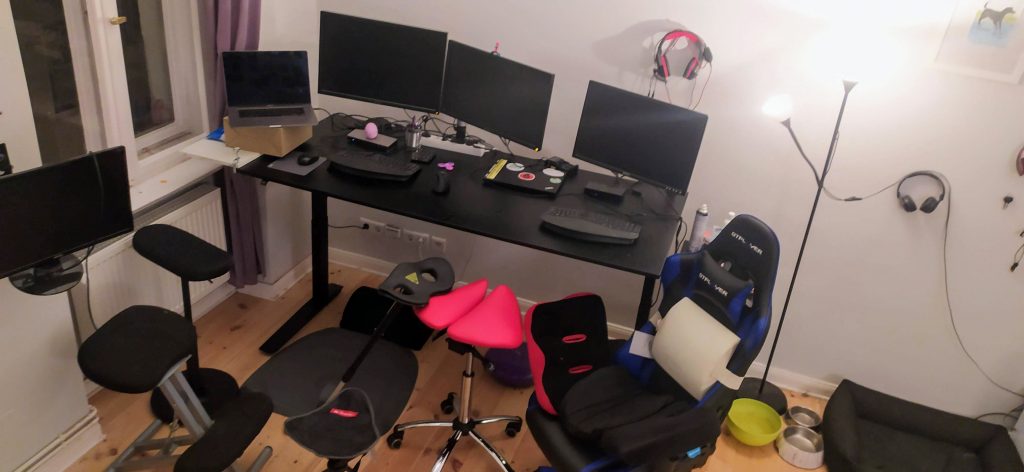
Experiments in Healthy Living
Devoid of a diagnosis, Francesca focused on making all-purpose healthy adjustments to her life. If she swapped out her bad habits for good ones, surely she’d see some improvement.
Like a good Italian, Francesca used to live on pasta and pizza. She drank 7 Up and Coca-Cola instead of water. But after meeting with the nutritionist in the summer, she started following a healthier, more restrictive diet. She gave up pasta, bread, red meat, sugar, and cheese, and concentrated on eating vegetables, whole grains, eggs, and chicken. (Her espresso, however, is non-negotiable.)
“I’m quite surprised because I can do it,” she said. “I can do it only because I’m alone, and I don’t buy stuff. And I can do it because there’s a pandemic, and I’m not going out for dinner.”
Exercise is an important component of her pain management strategy, although striking a balance is always tricky. If she stops exercising completely, her pain increases, and the lack of movement drives her crazy. But if she overdoes it – and there’s very little warning before she does – she could end up with a new pain, which will also refuse to fade.
She takes her dog on short walks four or five times a day, and does gentle home workouts on an exercise machine. She experiments with yoga. She still loves running, but goes back and forth on the prudence of doing so on any given week.
Francesca’s sister recently treated her to a custom bike seat fitting at the high-tech gebio-Mized concept lab. The analysts used a seat filled with sensors to assess the pressure patterns of Francesca’s rear, and let her try several different saddle seat designs.
She found one that was comfortable enough, though it could use better padding to avoid putting pressure on her sensitized ischium.
Her workstation can be quickly reconfigured with a variety of perches and ergonomic chairs. When the saddle seat becomes uncomfortable, she’ll switch to a kneeling chair, or adjust her computer height and stand. No single position is comfortable for long, but if she keeps switching, and takes frequent breaks, she can get through her workday without being the worse for it.
She recently took up meditation, which she performs lying down on her back. While it doesn’t treat her sitting pain, it does help relieve stress, and gives the muscles in her aching neck the chance to relax.
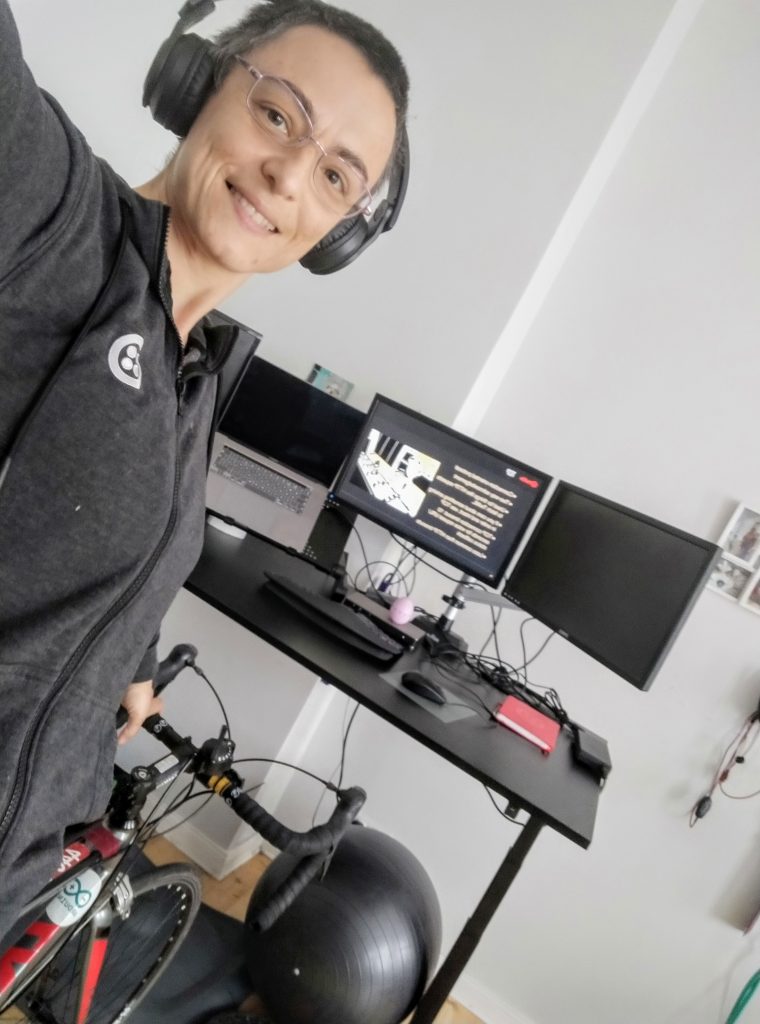
Socializing Without Sitting
Living with unpredictable and unspecified pain has a tendency to interfere with one’s social life. It’s hard to make plans in advance when you’re not sure how well you’ll be feeling at the appointed hour. And in Francesca’s case, many normal activities make her pain worse.
Most of Francesca’s peers have no problem meeting up at a café. Francesca will sometimes agree, and spend an hour catching up with an old friend. She’ll spend that hour fidgeting in her seat, trying to find a comfortable angle. But none of the angles are all that comfortable, and she will be reminded of this for days afterwards, while her pain flares. Then she’ll really be incapable of sitting in a café for an hour.
Even well-meaning attempts to cajole Francesca into socializing can be doomed to failure. Once, Francesca’s sister, who is an avid athlete and marathoner, tried to invite Francesca to a triathlon club. “They’ve all been injured, they understand,” she assured Francesca. Maybe so, but these triathletes were also capable of healing, while Francesca’s injuries lingered.
Online dating can be difficult and emotionally draining in the best of times, but those with chronic conditions face additional obstacles. Should you list your condition in your profile? Proactively invite the other person to activities you can handle? Ask about their physical restrictions?
“How do you explain to someone that I can’t go to a restaurant? I can’t go to the cinema?” Francesca wondered.
The characters that people play online can be off-putting as well. “You read the profile of this person, and they’re climbing Everest and everything, and you’re like, ‘I can’t.’” Francesca said.
She also realizes that any potential mate would have to put up with her bizarre routines. Like her short but frequent walks, meditation breaks, mini exercise sessions, and constant shifting from one position to the next. Jago, on the other hand, is happy to leave the house with her, and doesn’t ask awkward questions.

Looking Ahead
Francesca tries to separate her healthy from her unhealthy attitudes, and act on the former. But it’s nearly impossible to keep a positive attitude all the time. When she’s not in pain, Francesca is energetic to the point of being hyperactive. But when pain forces her to slow down, envy and disappointment can seep in.
“I get frustrated when I have to change my expectations,” she explained. “I see pensioners who have more energy than I do. I’m an active person and I’m being so healthy, and I’ll think, that’s unfair. Sometimes, I want to forget I have a problem. I want a normal life.”
She also gets frustrated when supposedly healthy activities, like running, are pushed on everyone without regard for ability or preexisting health conditions. With her foot pain and injured hamstring, she is all too aware that “willing” and “able” are not the same thing.
When friends, family, or doctors doubt the severity of her pain, Francesca is tempted to second-guess herself. But then she remembers the amount of work she’s put into treating her condition, and realizes it’s not the work of a lazy person.
“I did doubt myself a lot,” she explained. “Maybe I’m just a complainer. But no, look what I’m building here.” She gestured to the heap of ergonomic equipment that is her workstation. “I’m a fighter.”
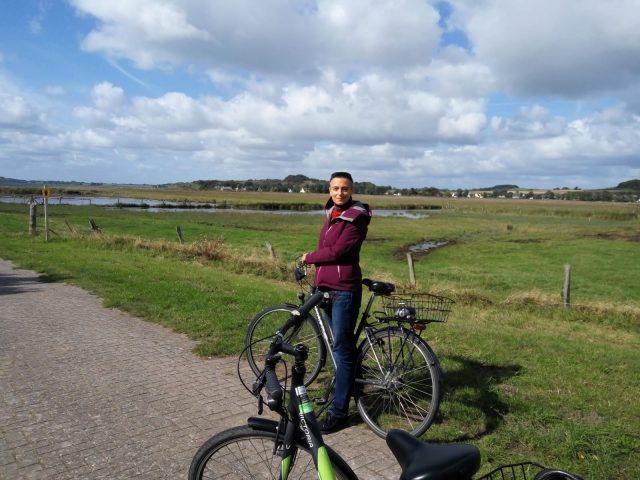
That’s a brilliant story. It really shows the complexities of chronic pain, much like my own. Well done to Francesca and the writer.